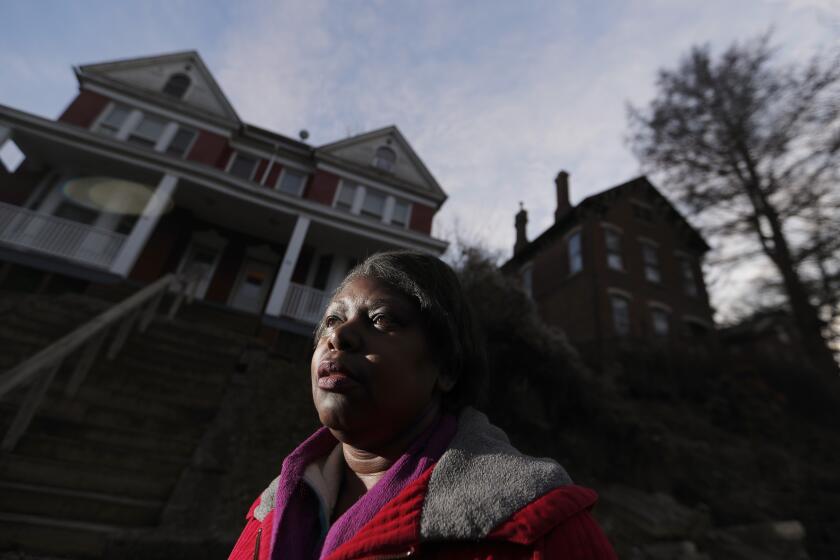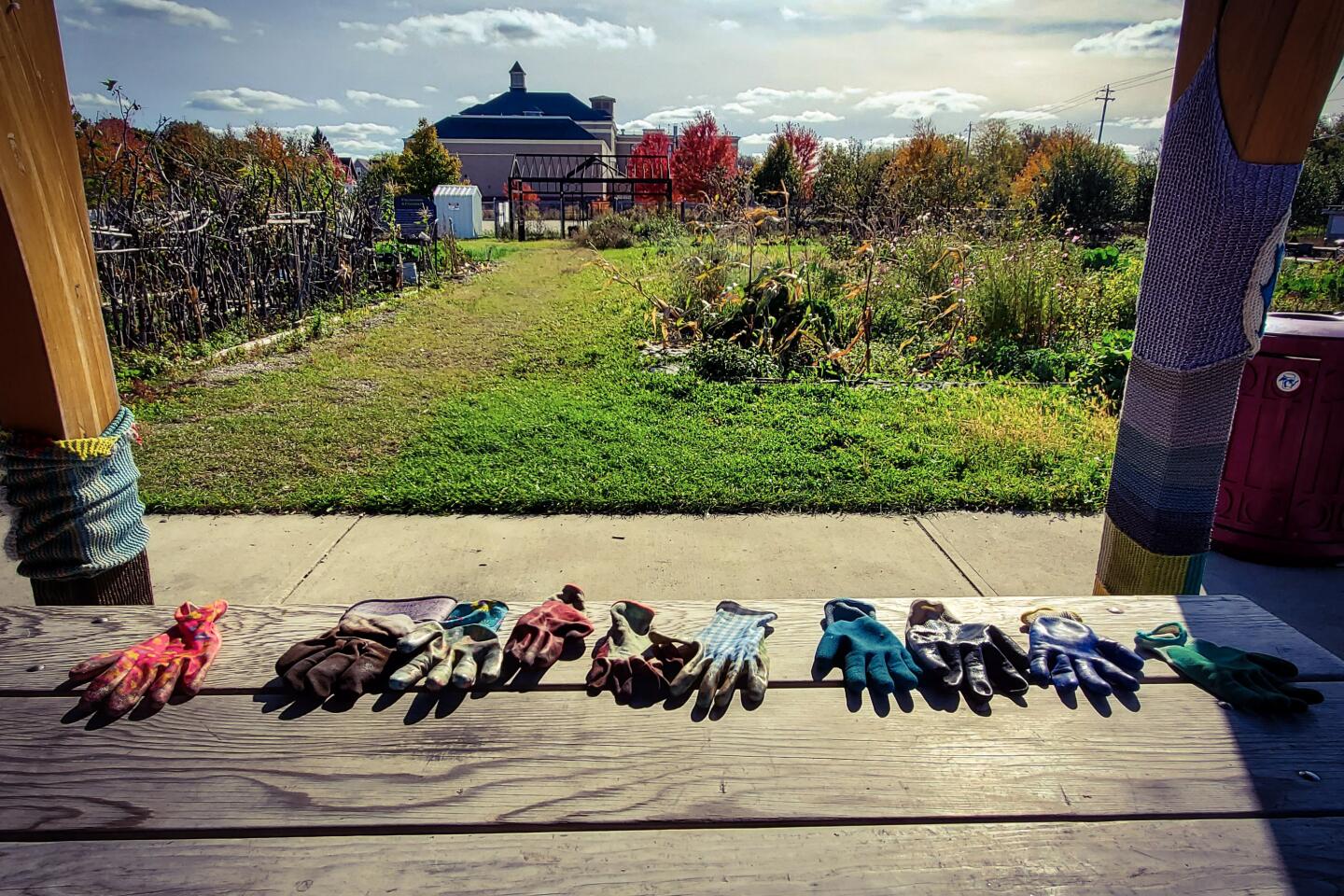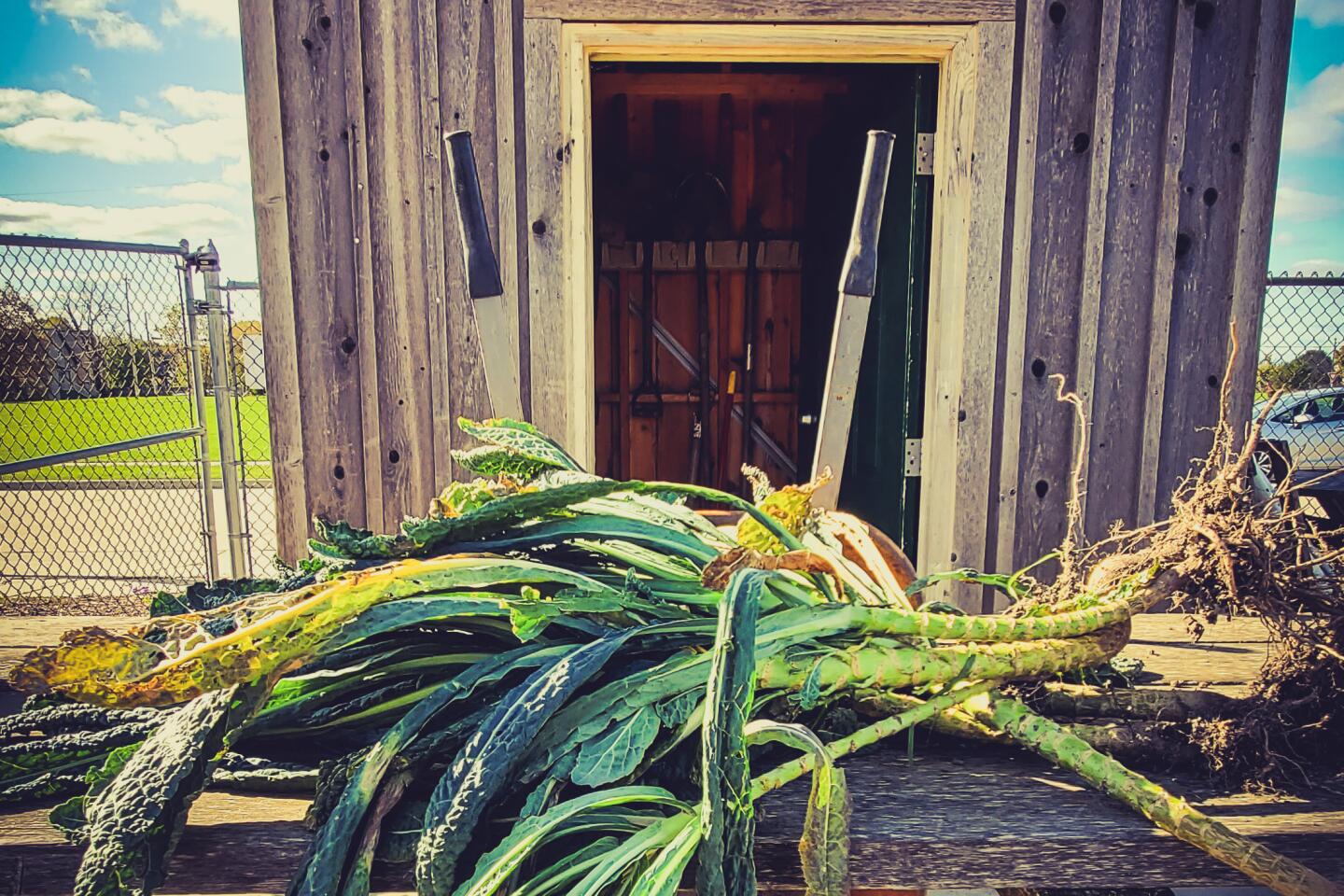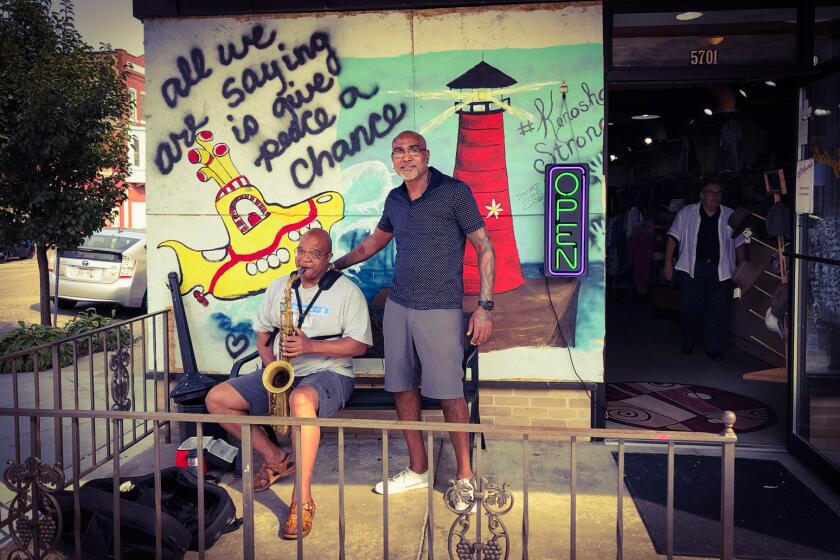In a garden steeped in Milwaukee’s racist past, Black residents find a salve for weary spirits
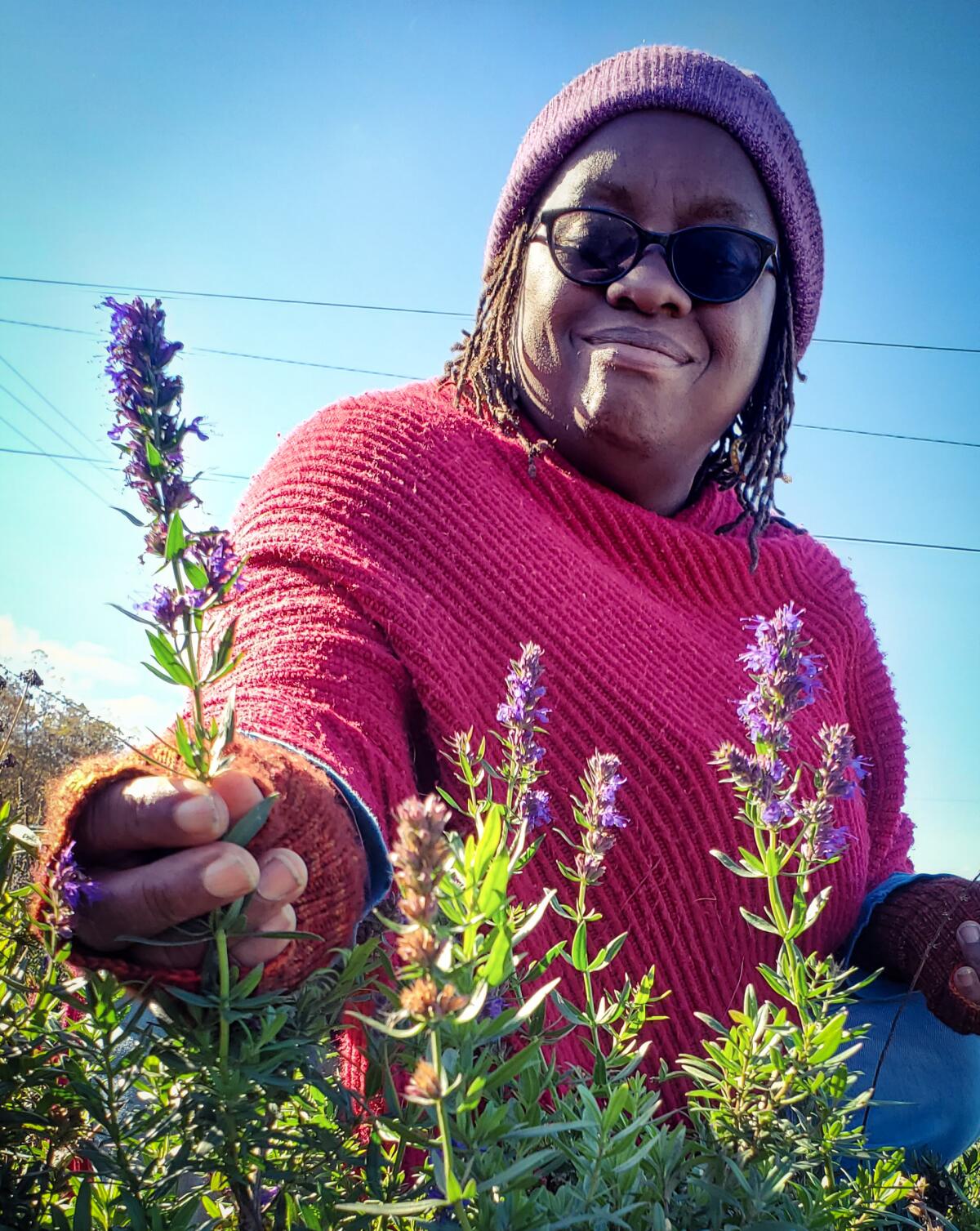
MILWAUKEE — On the first day of fall, Venice Williams joined a small group of women for a morning tea ceremony at Alice’s Garden to celebrate the autumn equinox.
Sage burned, purifying the air and cleansing the spirit.
The garden was in transition. The last tomatoes of the season hung overripe on the vines. Sunflowers with fading petals drooped under their own weight. The first frost, not far away.
Williams, who serves as the communal farm’s executive director, told the women that the changing of the seasons can help them cope with upheaval, sorrow and loss — private heartache, the death of a loved one, a stranger killed by police.
The garden itself is a rare oasis in Milwaukee’s historically Black northwest side, which has few public places for people to reflect. Alice’s Garden feels like a salve for a weary spirit.
In a society with a history of treating Black people and other people of color as if they don’t belong, Williams wants them to know that in this garden, they don’t have to doubt it.
“We grow community, we grow friendships, we grow families,” Williams said. “It’s got to be more than food sometimes.”
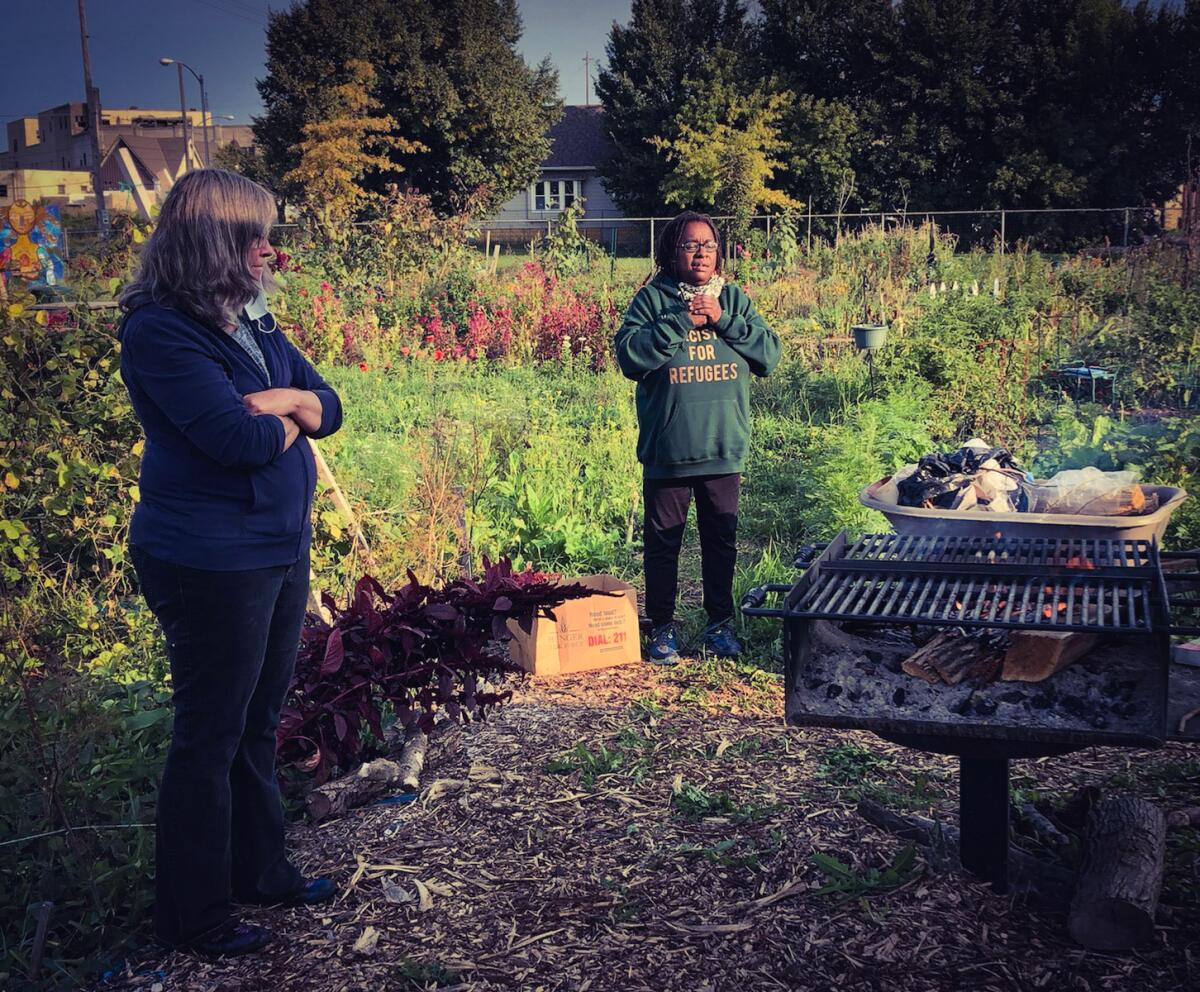
Despite the looming election, talk of politics here takes a back seat to yoga sessions on the grassy lawn, lessons in urban farming and classes on coping with grief.
Growing on the 120 parcels are rows of beans and kale, collards and corn, orange calendula, fragrant lavender and different varieties of mint. A meditation labyrinth paved with stones spirals inward along a path overgrown with shrubs, offering a space to get lost in one’s own thoughts or lay down burdens.
Here, fresh air fills the lungs. The only sound is of crickets chirping.
Some people come just for the tranquillity.
“A garden gives you a picture of what the world could be,” said Anthony Courtney, a retired Black schoolteacher who sat at a picnic table and read from a book on mental health one evening.
“You’ve got people coming in peace,” Courtney, 74, said. “You don’t have no drama out here. You walk outside these doors, you’ve got drama.”
If there was ever a year when Black Americans needed places to retreat and visualize how the world — and their country — “could be,” it’s this one.
Police killings of Black people. A coronavirus pandemic that’s taken the lives of more than 227,000 Americans, a third of them Black. A president who’s staked his law and order message on depicting peaceful anti-racism protesters as thugs and anarchists.
A series of cross burnings 30 years ago led the residents of Dubuque, Iowa, to ask, “Why do we hate?” In the lead-up to the 2020 Iowa Democratic caucuses, L.A. Times reporter Tyrone Beason traveled to Dubuque, Iowa, to find out whether its efforts to confront racism and inequality are working, and what the rest of the country can learn from its example.
Tamara Swanson, 41, felt inspired by what Williams said at the tea ceremony. She lives in Oak Creek, a suburb that’s a short drive south from downtown, and this was her first visit to Alice’s Garden.
Swanson, who’s Black, works as a nurse. She’s used to thinking about the fragility of life and the certainty of death.
“A lot of times, we’re so quick to get past things, especially with everything going on in the world and with the deaths of Black people by police officers — it’s like, ‘On to the next,’” Swanson said.
“It’s important to sit with the deaths — and not forget.”
Swanson curved along the labyrinth’s gravel path, which was lined with hyssop. The mint-like herb was used in African and Black American tradition to cleanse the bodies of the dead, an act that soothes survivors, Williams said. She urges Black visitors to take some home to use in the event that a loved one dies.
This part of Milwaukee, a city of 592,000 that’s 44% Black, is known as one of the most inhospitable in the nation for Black people because of the high poverty and incarceration rates, widespread joblessness and struggling schools. Empty lots that once belonged to working-class Black households line some of the streets that surround the garden.
In grief, Detroit’s Marsha Music writes tender goodbyes, praise-filled shoutouts as the coronavirus outbreak ravages black communities
“It’s even more important to have this space here because we don’t have a lot of them on our side of the city,” said Williams, 59, who spends much of her time at the garden in warmer months but lives in a different neighborhood farther out.
She says these 2.2 acres shed light on the racial injustice that sparked protests in all 50 states this summer.
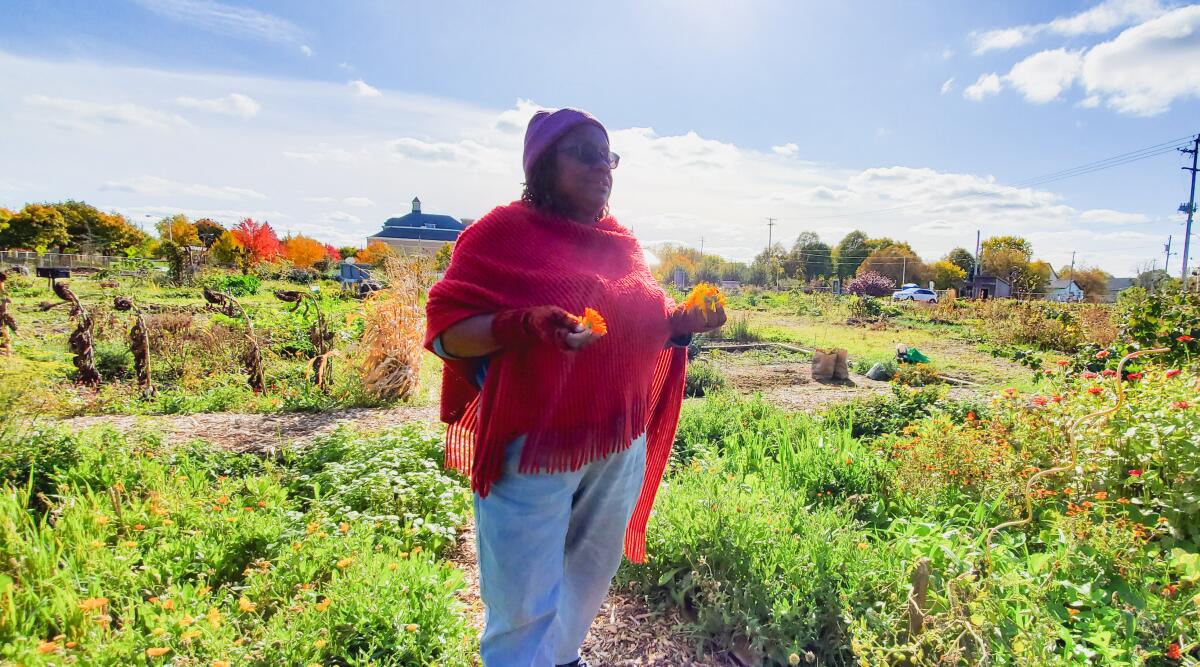
America’s discrimination against Black people runs deep in the garden’s dark soil.
In the decades leading up to the Civil War, the white-owned farm that once stood on this land offered safe houses for runaway enslaved Africans who’d made their way from the South on the Underground Railroad.
“This nation’s land is saturated with the blood of people of color, of indigenous folk, enslaved folk, immigrant folk,” Williams said on a crisp fall morning as she picked calendula blossoms, used in balms for healing wounds.
“We always want to think that when it comes to issues of land, politics is far away, but no, no, no, no, no,” she said. “If land and food aren’t political, then I don’t know what is.”
There are other painful connections to America’s racist past.
Democratic presidential candidate Joe Biden and his running mate, Sen. Kamala Harris of California, have promised millions in financial assistance to home buyers and other investments to help Black communities recover from the decades-long practice of housing discrimination known as redlining. The demarcations of those days still exist in the area around Alice’s Garden.
North Avenue cuts through the neighborhood a couple of blocks from the garden. It was once the de facto border separating the white neighborhood from what was known as Bronzeville, the Black side of town.
The 16th Street Viaduct, about a 10-minute drive from the garden near Marquette University, served as the gateway separating Black and white residents on the south side of Milwaukee
“They had a standing little joke: You could go over there to work, but be back across that viaduct by sundown,” a 75-year-old man who gave his name only as Joe said as he cleared withered bean vines on his plot one day.
The police killing of George Floyd and resulting protests have led white Americans to reckon with racism more vigorously than at any moment in recent history.
When a white priest led racially mixed marches from the segregated Black side of Milwaukee across the viaduct to push for fair housing laws in the summer of 1967, white mobs numbering in the thousands taunted and attacked them.
Americans were shown a more idyllic Milwaukee on the 1950s-themed TV sitcom “Happy Days,” with its loving white family, the Cunninghams, references to the city’s vibrant brewery industry and “the Fonz” cheerfully flashing his signature thumbs-up sign in his biker jacket.
Segregation didn’t fit neatly into that fantasy.
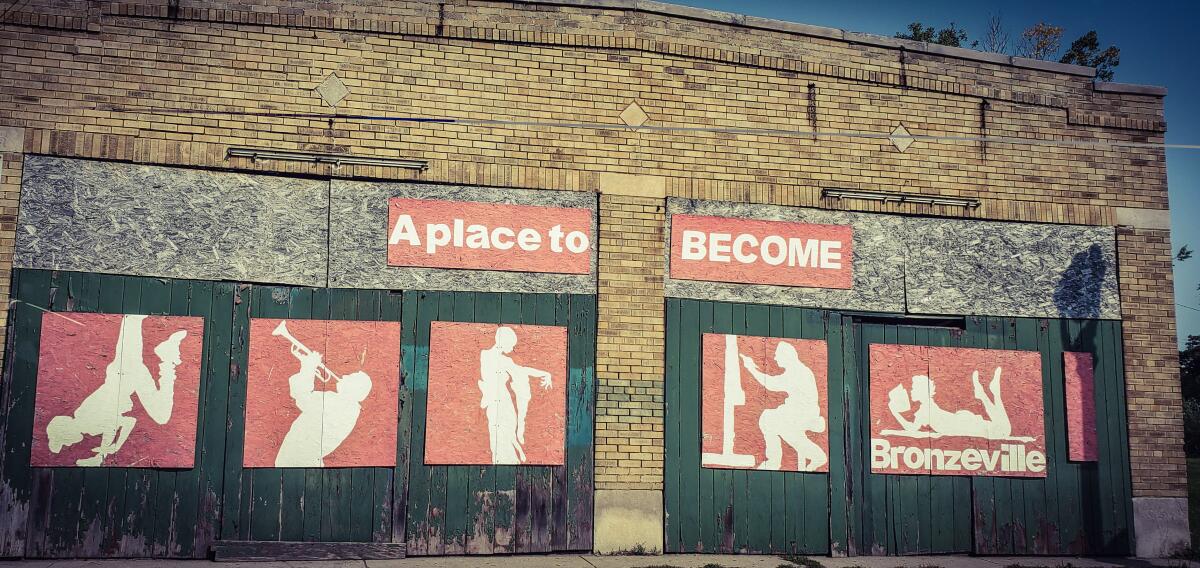
“The ‘problem’ was we wanted the same thing they wanted,” Joe said of the city’s white people. “But they put us down here and they crowded us all in. They wouldn’t give us jobs.”
Black residents who were forced to live in this neighborhood established shops and a thriving nightlife scene. But by the early 1970s, the city had demolished scores of residential blocks, including the one where the garden now stands, to make way for a freeway that was never built. In the aftermath of that destruction, residents planted a garden here in 1972, later naming it after longtime community activist Alice Meade-Taylor.
Williams moved to Milwaukee from Pittsburgh in 1989 to become a youth minister for a local nonprofit that planned to expand use of the garden after it had fallen into neglect. While she was working in the garden, curious residents would stop their cars or walk up to the fence to share memories of the old days. It was then that the greater importance of the land, and the anger of those who remember its better days, sank in.
“It was a village,” Williams said of that period leading up to the early ‘70s. But then the whole community was uprooted.
Williams asked a colleague — whose family used to live in houses on the garden’s land — to build a white picket fence in the center of the lawn, a reminder of the lives lived and what was lost.
As the sun set on an artisan market one recent evening, Morgan Holmes sat at a picnic table in her Milwaukee Brewers sweatshirt. Williams keeps pleading with Holmes to start a plot in the garden because she lives so close. She’s one of the few who are still planted firmly in this neighborhood.
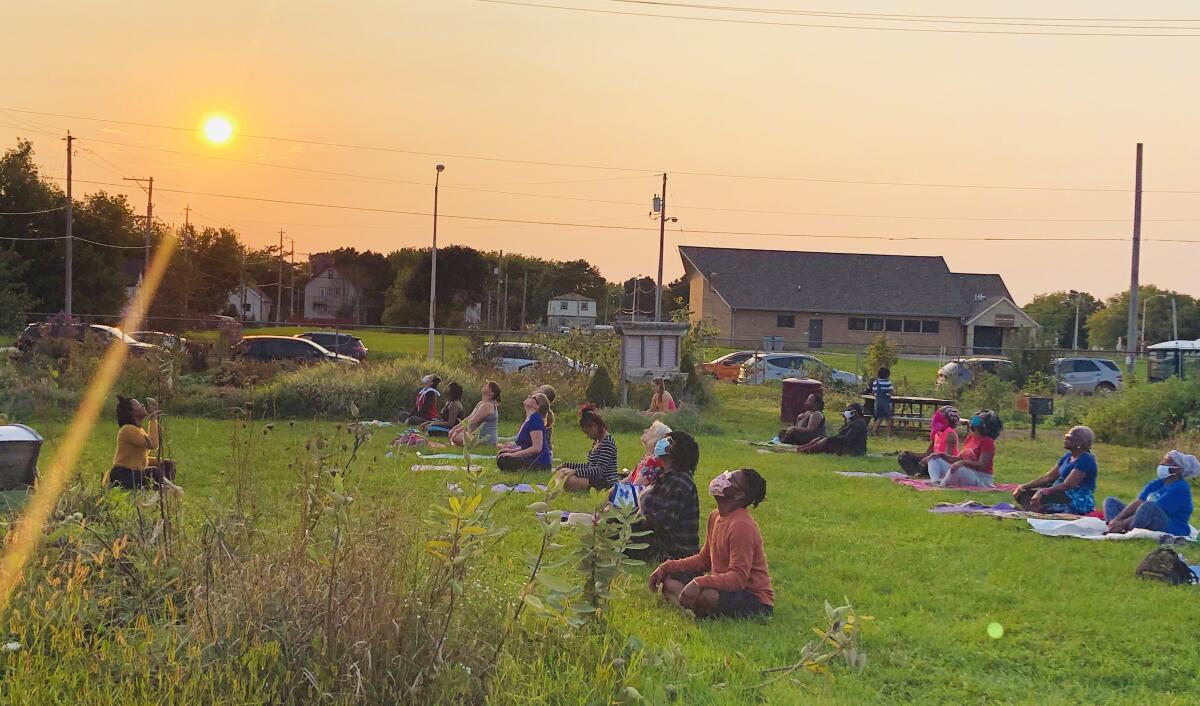
Holmes, 62, smiled as she recalled raising three boys, now grown men, in her house across the street. She’s lived there for 41 years. It’s the only surviving home on a block once filled with neighbors who created an extended family by looking after one another’s children as house after house was demolished.
“I raised a lot of kids in this neighborhood,” Holmes said. “A lot of them call me ‘Auntie.’”
“The garden is a wonderful thing,” she said. “It used to be dead — a lot of garbage, a lot of furniture. We have life back. We have butterflies now. We have lightning bugs.”
Holmes said living on land where Africans once sought refuge from the horrors of slavery fortifies her.
“I can feel the presence, I can feel the people’s pain just imagining what they went through,” Holmes said.
As Holmes spoke, the orange hue from the setting sun lighted farmers of different races tending rows of flowers and vegetables, a Latina music teacher giving guitar lessons as her children ran around her, Black and white visitors doing yoga side by side in the grass with their necks and arms stretched to the sky.
Holmes believes the garden, which welcomes people of all backgrounds, can teach Americans what it looks like when people develop an appreciation for the struggles of those who aren’t like them.
“If we can come here in this garden, with all of these different races,” Holmes said, “we can come together as a world.”
Voters in the battleground state of Wisconsin are using street art, church services and vigils for Black people killed by police to call not only for justice but also for Americans to restore their faith in one another.
Williams is not sure that white Americans are ready to confront the despair, outrage and unfairness that their racial privileges have caused for Black and brown people.
Sitting in a reading circle on the garden’s lawn one morning, she was frank when she told the group that Black people’s quest for acceptance and respect, safety and security, will continue no matter who wins the election.
Williams expressed disappointment in herself days later. She wants to find a way to attract more young Black people to the garden, especially now when the stress of the racial injustices they’ve inherited feels so pressing.
Later that night, about 50 young protesters, some on foot and some riding inside and on top of cars, stopped traffic as they marched through the city to protest a Louisville, Ky., grand jury’s failure to recommend murder charges in the killing of Breonna Taylor. They lighted candles at a mural for George Floyd on North Avenue with the words “I can’t breathe” painted beside his portrait. They kept on until they reached a mural dedicated to Taylor.
Someone in the racially mixed group called for a moment of silence. People raised their fists and fell as quiet as the garden. But there was no look of peace on their faces, no willingness to patiently wait for change to arrive like the seasons.
One young Black man splashed water on the pavement and cried out for the pain felt by Taylor’s family, as well as for the suffering of his Black ancestors.
Another shouted his demand for racial justice.
“We’ve got to go back and plant new soil over the blood that was spilled in America,” he said.
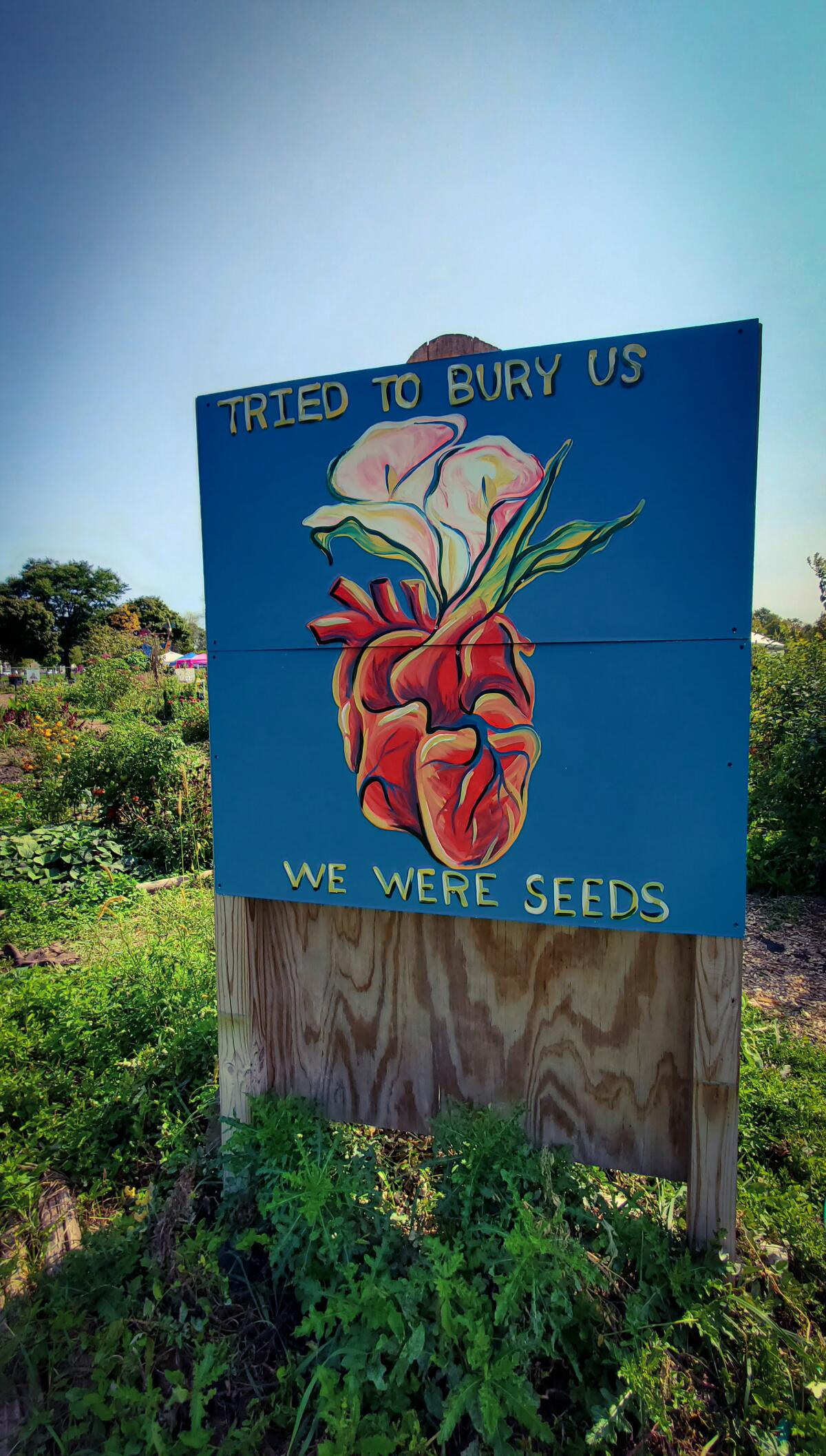
The vigil felt more raw and urgent than the yoga and workshops that take place at Alice’s Garden, but all share the same mission.
A hand-painted sign in the garden echoes the defiance — and the determination to lift up an oppressed race — that the protesters expressed.
“Tried to bury us,” the sign reads. “We were seeds.”
More to Read
Get the L.A. Times Politics newsletter
Deeply reported insights into legislation, politics and policy from Sacramento, Washington and beyond. In your inbox three times per week.
You may occasionally receive promotional content from the Los Angeles Times.
